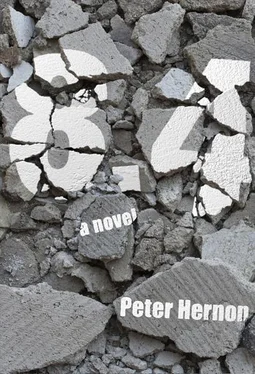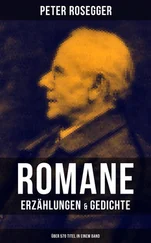Driving in the slow-moving traffic, Atkins experienced a moment of intense pain. He knew what had happened. It had happened to him before. Seeing the damage, the shattered buildings, and the body bags after a bad quake made the images of Mexico City come sweeping back. The memory of his last night with Sara in that hotel hit even harder. He would never get over it.
He pushed the memory away. There wasn’t time for that now.
AS Atkins continued south, many of the intersections were blocked by police cars, fire trucks, and clusters of ambulances. He drove by the main entrance to Graceland. The white-columned mansion of Elvis Presley was on a low hill and partly hidden by trees. Two of his private airplanes, a jet and a turbo-prop, were parked on a small plaza across the street. Even after an earthquake, a line of visitors had already formed, waiting for the landmark to open, mainly elderly, silver-haired women who’d descended from a tour bus. They weren’t going to let an earthquake keep them from paying homage to the King.
The collapsed shopping center was near the intersection of Presley Boulevard and Raines Avenue. Atkins parked a few blocks away. Police had strung yellow crime-scene tape around the perimeter of the building. Red and blue lights flashed along streets jammed with emergency vehicles.
Rescue workers were digging furiously around the edges of the wall, searching for survivors, probing the ground with sticks and their hands. A couple of heavyset cops were using dogs.
One look was enough to tell Atkins they were probably wasting their time. The entire west wall, about forty yards of brick, had fallen on the workers.
Atkins spotted Jacobs in the crowd. He was hunched over with a cell phone screwed into his right ear. He wore a battered yellow hard hat, a muddy overcoat, and high-topped rubber boots. An ID badge hung from a chain around his neck.
Jacobs waved him over. “Another reporter,” he said, putting the cell in his coat pocket. “It’s been nonstop since I got up. I’ve already called Reston and asked them to send us some media people. We’re gonna need all the help we can get.”
“How many dead?” Atkins asked.
“So far, twenty-six. There could be seven or eight more buried right here. No one seems to know exactly how many were up on the scaffold when the wall fell over.”
Atkins wanted to know about aftershocks. These were often more deadly than the initial earthquake, bringing down already weakened buildings with astounding suddenness. He’d seen it happen often enough. The first time was in Mexico City.
Jacobs shook his head. “I’ve got five people out setting up a PADS network. So far we’ve had nothing significant.”
PADS stood for “portable autonomous digital seismographs.” The suitcase-sized devices were used to record aftershocks and track strong ground motion. Some of the instruments were being shipped in from the USGS research center in Boulder. They didn’t have enough on hand in Memphis, one of Jacobs’ chronic complaints even though he was no longer with the agency. The lion’s share of USGS funds and equipment invariably went to California. The New Madrid Seismic Zone had always been a poor sister to the San Andreas Fault. Jacobs didn’t dispute that the earthquake risks were greater in California, where they happened far more often. He just wanted to make sure the very real danger in the heartland was also adequately studied. So far, the risk here had not been recognized. The shortages of equipment and staff were glaring.
He handed Atkins a printout from a seismometer.
“The epicenter was right on the Tennessee-Kentucky line. Nearest town is a place called Mayfield. I’ve been there. It’s up by Kentucky Lake. Right smack in the middle of the New Madrid Seismic Zone.”
One of the rescuers raised a hand, motioning for the other diggers to stop. They were all firemen. Despite the cold, some of them had taken off their heavy yellow coats and were working in shirtsleeves. They’d just pulled a man from beneath the wall. He was completely covered with mud. Atkins watched as a big, red-faced fireman with a thick beard wiped mud from the man’s mouth and nose and, kneeling next to him, began mouth-to-mouth resuscitation. Another man hurried over with a canister of oxygen. They put the mask over the bricklayer’s mouth.
The big man got up, picked up a shovel, and went back to work along the wall. He already knew the outcome. After a few more minutes, an EMS technician covered the bricklayer with a green poncho and helped carry the body to an ambulance.
Spectators had gathered, hundreds of them. They were watching the show in hushed silence, pushing in as close as they could. The cops tried to keep them back, but it wasn’t easy. There weren’t enough of them, nowhere near enough.
That never changed, Atkins thought. Gawkers always turned out in force after an earthquake. So did looters. In Mexico City he’d seen a man break a dead woman’s fingers to get her rings off.
“Well, it looks like all your observations were right on target,” Atkins said. “Even down to the animals.”
Jacobs had actually anticipated the quake. True, it wasn’t an exact prediction—he didn’t give a time or a precise location or a probability, all key ingredients. And yet Atkins thought his friend still had reason to be proud. So much of their science remained highly intuitive. Jacobs thought conditions were ripe for a quake and had been proven right. That was about as good as the science currently allowed.
“I’d say so,” Jacobs said. “We haven’t had a temblor that strong since the one I was telling you about back in the 1890s. We were sure overdue.”
MEMPHIS
JANUARY 10
4:50 P.M.
THE TWA 737 BANKED LOW. THEY WERE approaching the Memphis airport from the south at twilight, for Elizabeth Holleran always a beautiful time of the day when the light was strange and soft. Staring out the window, she saw the Mississippi curving south in a wide, caramel-colored crescent. Large parts of the city were dark, still without electricity twelve hours after the earthquake. Then the plane banked again, and she noticed the fires. She counted at least ten of them.
Holleran had flown from Los Angeles to St. Louis, then caught a connecting flight to Memphis after a three-hour layover. She’d traveled light, with a few pairs of slacks, shirts, and sweaters in her garment bag, and her laptop. Several times during the forty-minute trip, the captain had provided updates about the earthquake. More than thirty people were dead. Traffic was a mess. Hospital ERs filled to capacity.
They were lucky, the captain told them in a drawling accent. The quake hadn’t knocked out the airport’s runway lights; otherwise they would have had to shut down Memphis International.
Holleran remembered his comment about the snarled traffic an hour later after she got a rental car and slowly merged onto Airways Boulevard. The woman at the rental counter had warned that driving anywhere would be difficult—especially at night. They were issuing radio reports every ten minutes, telling people to stay at home. She advised Holleran to check into one of the motels near the airport and wait until morning. But Holleran was eager to get to the University of Memphis and try to track down the head of their earthquake center, Walt Jacobs.
She’d finally remembered his name and where she’d met him. It was in San Francisco for a seminar on the Northridge quake of 1994. She doubted he’d remember her. He’d presented a paper on the New Madrid Seismic Zone, and she’d asked a few questions. She’d spent the better part of the day trying without luck to reach him by telephone. She figured this was one night he’d be working late and hoped to find him at the university. She’d brought Otto Prable’s data. It was loaded on her laptop.
Читать дальше












